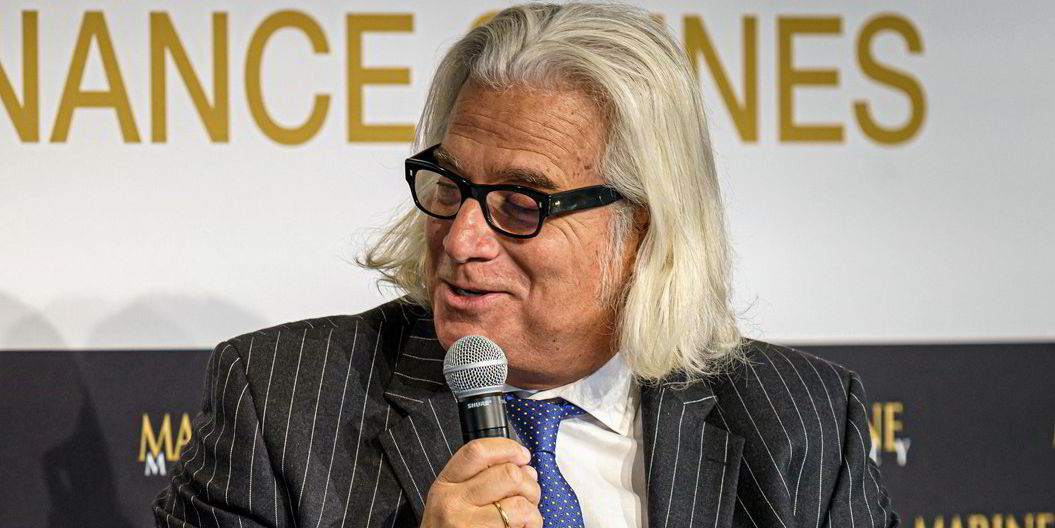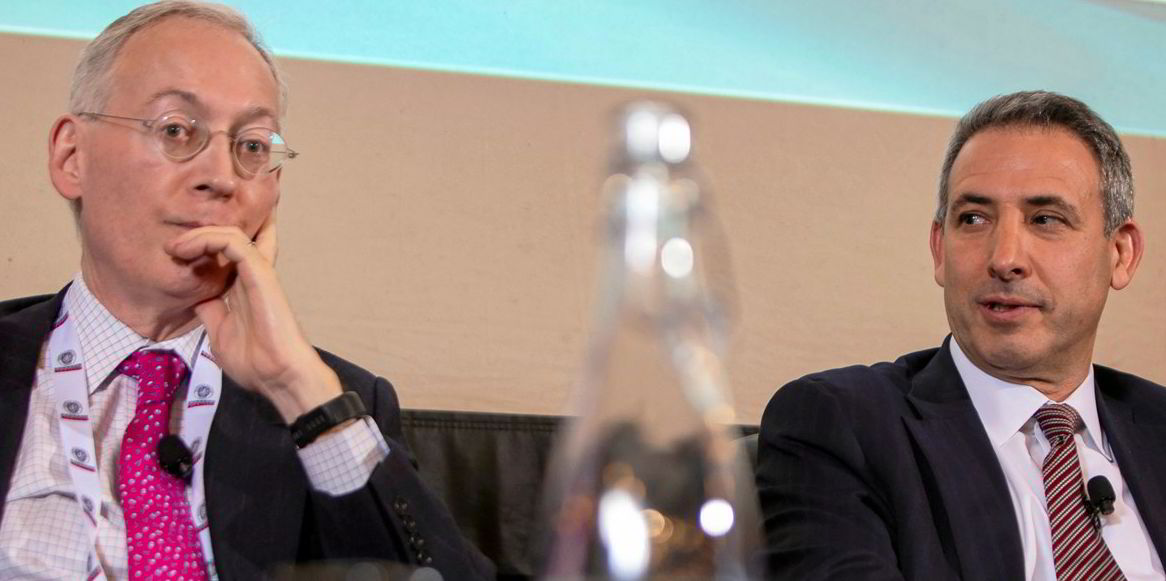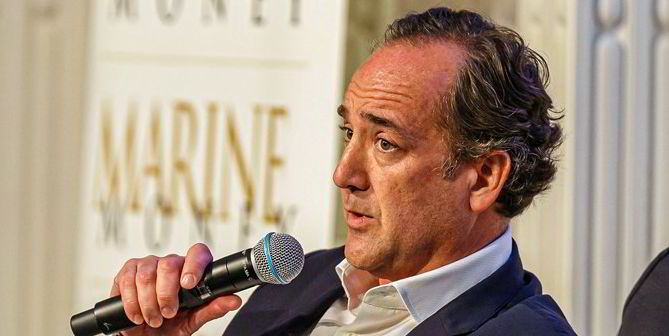When John Wobensmith is asked what shipping’s public markets might be like in a decade, he reaches 10 years into the past for a reminder of how much can change.
Looking largely within the dry bulk sector in which Genco Shipping & Trading operates, the chief executive recalls a different landscape in 2013.
“We had many companies, including Genco, on the brink of Chapter 11 bankruptcies,” he notes.

“Private equity was just beginning its large-scale investments, mostly in dry bulk. Another round of newbuildings had just been ordered. Poor corporate governance was more the norm than the exception. And many companies had unsustainable capital allocation policies, with non-amortising debt and high dividends under a model that just wasn’t sustainable.”
A decade later, many public shipowners, including in dry bulk, are in much better shape.
“Companies generally have low debt — we’re down to 10% net debt and should be at zero by the end of the year. Private equity, with the exception of Eagle Bulk and Star Bulk, is gone. We don’t have large-scale newbuildings, around 6% to 7% of the fleet now. And it’s more the norm to have good corporate governance,” Wobensmith tells TW+.
His point: 10 years is a long time, and it’s not unreasonable to expect more big changes.
His bets for 2033: Large, well-capitalised public companies will control more market share. Consolidation will be in vogue. Particular to dry bulk: 4,400 ships, or 33% of the fleet, built between 2009 and 2012, will need replacement.
Complicating that task will be regulatory pressure to shift to cleaner green fuels for propulsion and the cost of making the transition.
“It’s not so much owners being able to afford it, it’s about being able to play the game,” he says. “A lot of this will be done on the backs of long-term charters. You’re going to need financing, you’re going to need a healthy balance sheet to play that game. If you’re Rio Tinto doing 10-year ammonia-ship charters, you want to know that your shipowner partner has a strong balance sheet.”

If some of this sounds familiar, it should.
Investment bankers, equity analysts and others have been beating the drum for years about the need for public owners to become bigger and fewer, essentially to make them more investible. Bigger market capitalisations and greater trading liquidity can make capital cheaper and allow big institutional investors improved access to public shipowners.
Some of the move towards scale has already happened, with consolidators such as Star Bulk in the dry trade, Euronav in crude carriers and Scorpio Tankers in clean products offering large and liquid platforms.
But consolidation overall has remained elusive, raising a new question: is the expense involved in decarbonising shipping the straw that tips the scale in favour of bigger and fewer public shipowners?
It may make sense, but this is shipping, and stuff happens. Perhaps that’s what spurs someone who has analysed shipping stocks since 2003 — veteran Evercore ISI analyst Jonathan Chappell — to split his vote on the question of the industry’s public future.
Chappell calls this “the optimistic option” and “the realistic option”.
The first scenario has much of what Wobensmith has laid out.
“There is some consolidation of the current plethora of publicly traded equities as the broader market demands market cap, trading liquidity, corporate governance, decarbonisation plans and refuses to provide attractively priced capital to those who can’t check all of those boxes,” Chappell says.
In this optimistic scenario, when the dust has cleared, more than 40 US-listed public shipowners will have been whittled down to between 10 and 15, with two to four in each major operating segment. All will have market caps in the billions of dollars even in trough markets, with broad analyst coverage typical of other transport and energy stocks.
“In the latter, which I fear is most likely (and I use the 2013 to 2023 time frame as a reason for this conviction), there are still dozens of shipping companies listed in the US,” Chappell says.
“A handful offer sizeable market cap, decent trading liquidity and necessary corporate governance, but the vast majority still fall under the $1bn market cap threshold acting as pure lottery tickets on perfectly timing cyclical spikes that are short-term in nature.”
Why the inertia? Chappell blames traditional high hurdles to consolidation and “the long tail of companies that will never attain any semblance of size or scale while continuing to be supported by capital raises that are questionable at best.”
Of the financial experts interviewed by TW+, probably more align with Wobensmith’s vision — or Chappell’s sunny option — than with the darker version. Still others find separate issues they’d like to see overcome if public shipping is to have its brightest future.

Peter Georgiopoulos
Former leader of five US-listed companies, now United Overseas Group
“We need to see more institutional capital flow into shipping companies. In order for that to happen, we need to revert to the days when institutionally backed shipping companies were creating value for private equity — much like we did for Oaktree in the 90s and beyond.
“Post-2008, the capital markets have been providing access to capital at the peak of the cycle and restricting it at the trough. That is exactly the opposite of what should be happening.
“In the following 10 years, this trend needs to be reversed, or we are likely to see more bankruptcies than IPOs for shipping companies. Once that happens, we will be able to see greater access to the capital markets as well.”
Leo Vrondissis
Longtime Georgiopoulos lieutenant and partner in United Overseas Group
“In recent years, we have seen a shrinking number of publicly listed companies, with a large portion of them being very subscale for the public markets. One of our hopes in merging [Gener8] with Euronav was to create a vehicle that could be used to create investor enthusiasm through cycles and provide a platform for consolidation.
“The Euronav board and Frontline should be commended for trying to bring real value to the industry. Regrettably, this merger was not completed, to the great detriment of shipping’s reputation in the capital markets. Once again, the ego of a few people got in the way of the majority of shareholders’ interests. Unless this trend is reversed, the capital markets will not be a friendly place for our industry in 10 years’ time.”

Mark Friedman
Evercore investment banker
“I would expect fewer but larger public equity companies in 10 years’ time. The capital markets continue to favour larger companies with greater market capitalisation and share liquidity that are covered more broadly by buy-side and sell-side analysts. These companies have greater market access, more financing avenues and enhanced valuations.
“Only companies that have good reason to be public will stay public. This would be a continuation of the trend that we have seen, with fewer public shipping companies as a number of companies have been taken private (Atlas, DryShips) and others have been merged (Diamond S, Gener8).
“The structured equity deals that marked the early 2000s, with master limited partnerships and other yield plays, have largely gone away through consolidation as many of these companies have been re-consolidated with their sponsors (the Navios complex, Hoegh).

Hamish Norton
President of Star Bulk Carriers and former investment banker
“I think that what you’re going to see are much larger companies … In 10 years we will have a lot of zero-carbon ships, which are going to have been very expensive to build and use expensive fuel that is difficult to find.
“And so I think those ships will have been built probably with long contracts. As a result, I think that the revenues of the companies that own these ships will be much less volatile than what one experiences today. It paints a picture of companies that have a more liquid share, a less volatile share price and a less volatile revenue line.”
Chris Robertson
Deutsche Bank equity analyst
“We think there will be opportunities for new companies to enter public equity markets with a technology story, as well as for existing public companies to seek fleet upgrades as we get clarity on future fuels. Some companies will do better than others in adopting.
“I wonder if a new generation of public shipowners who haven’t come from a traditional shipping background — someone akin to an Elon Musk of shipping — who can disrupt the industry with technological changes could play a role in publicly listed companies.
“In [the] next decade we could see capital markets for shipping kind of reawaken because of the dramatic technological and environmental change. That’s where the future is going from a capital markets perspective. Anything related to energy transition is a more compelling story than just business as usual.”





